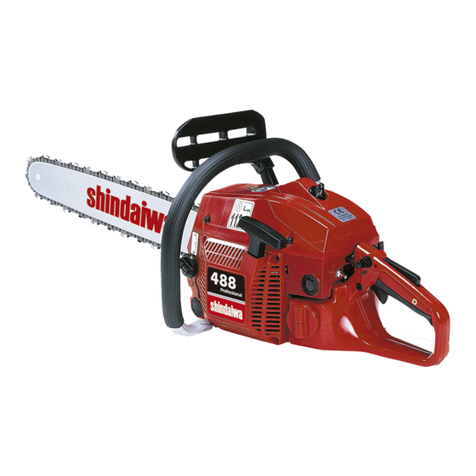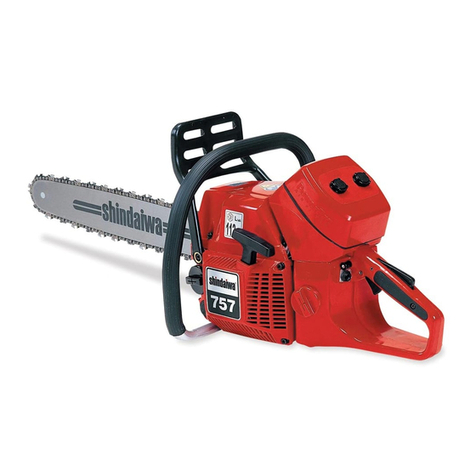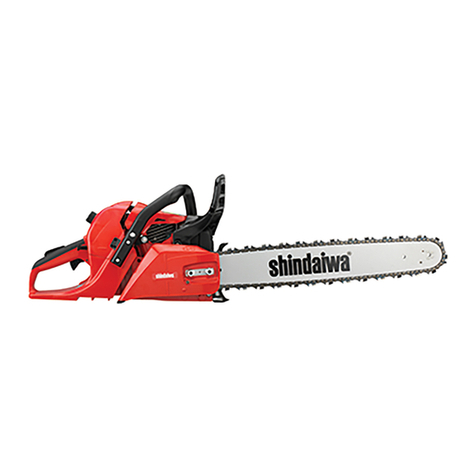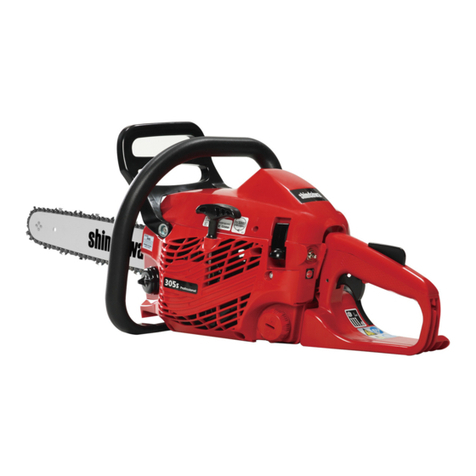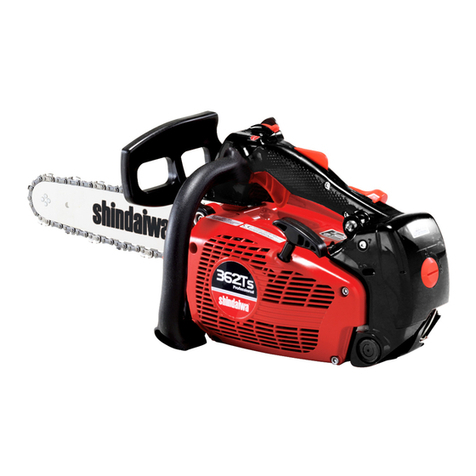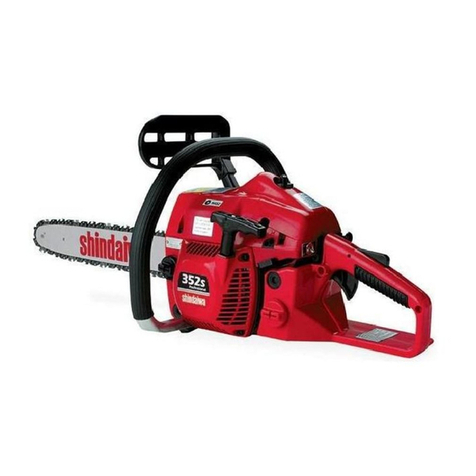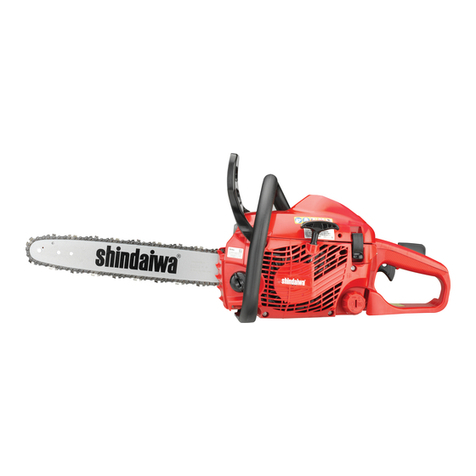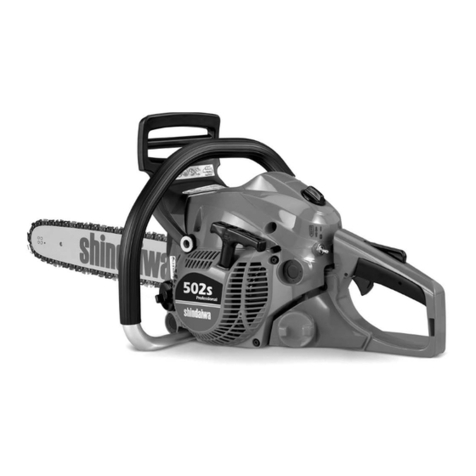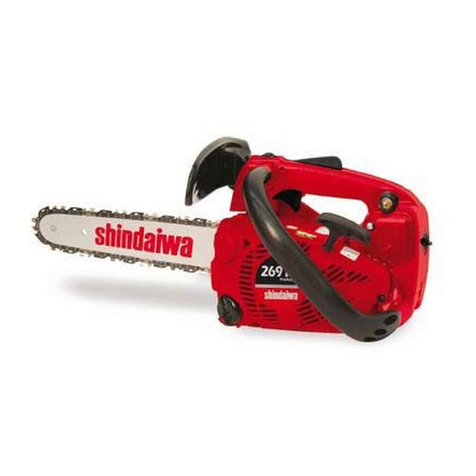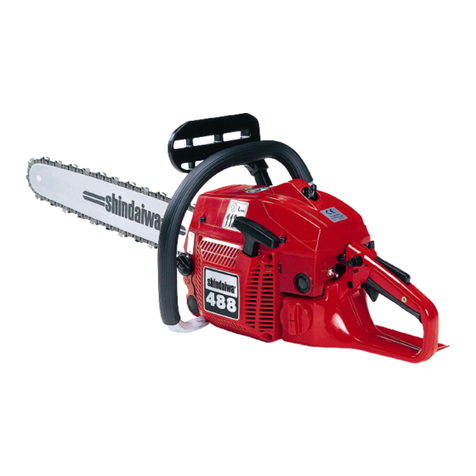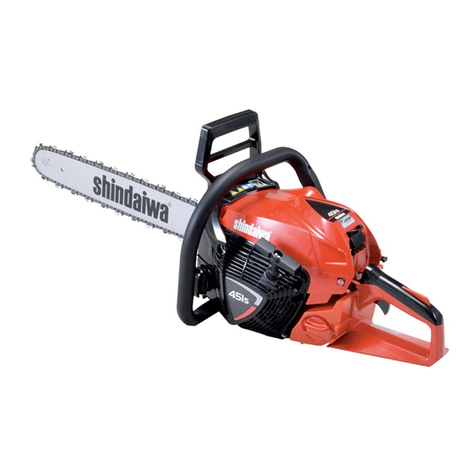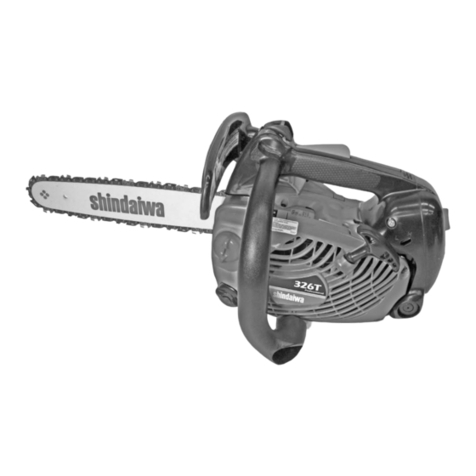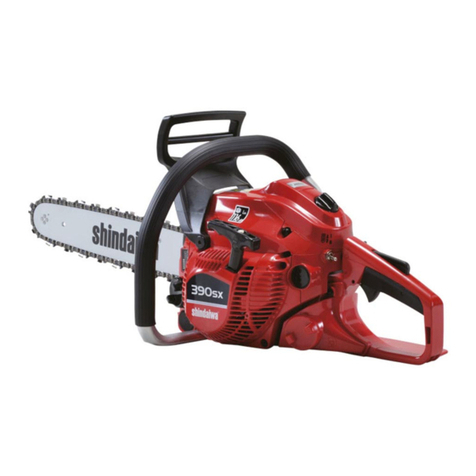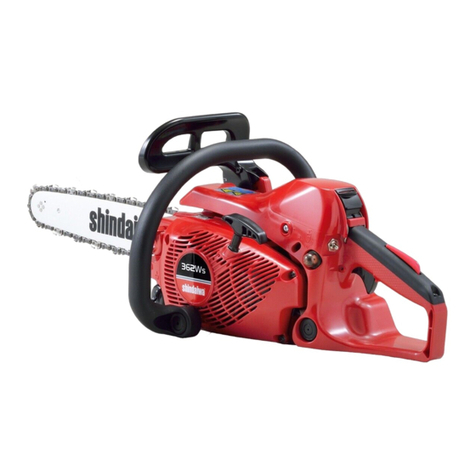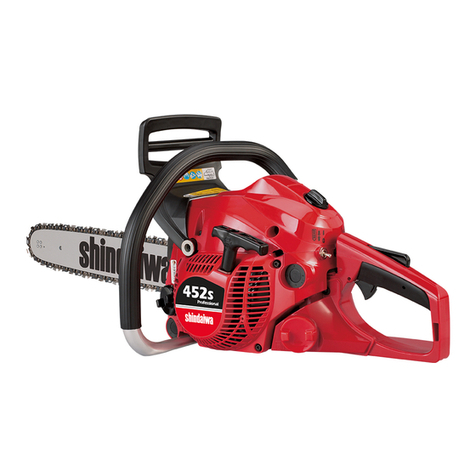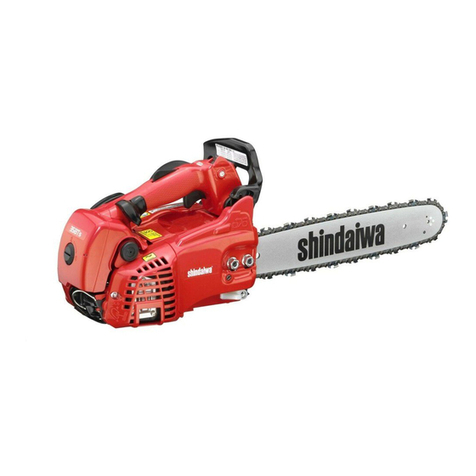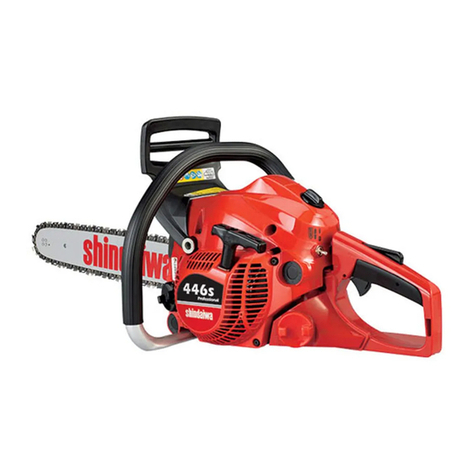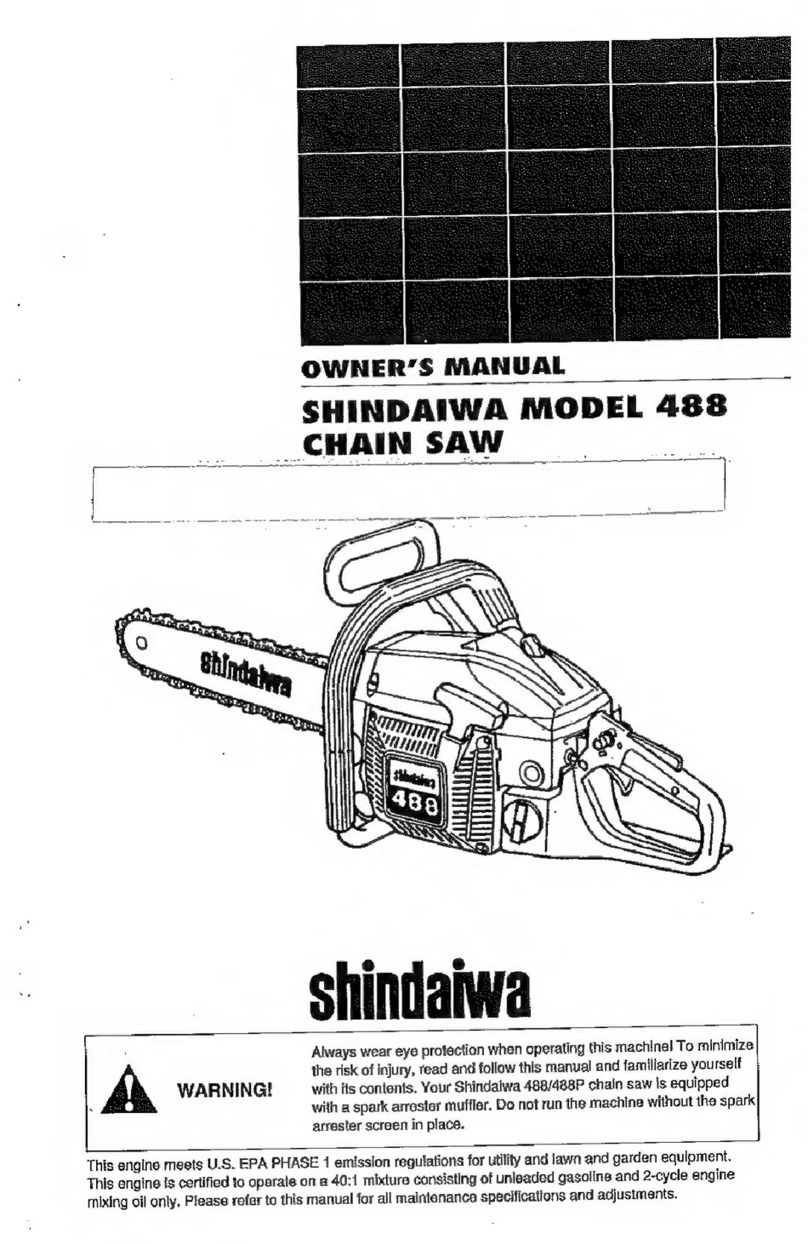䊚Shindaiwa Inc. 1995
6
CRK-27
Section 2 Troubleshooting The 2-Stroke Cycle Engine
Theory of
Operation
Figures 2.1 and 2.2
Spark plug
Compression/
Combustion
Exhaust and
transfer ports
closed
Intake
port
open
Crankcase
Vacuum
Figure 2.1 Crankcase vacuum is created during the
compression stroke. When the spark plug fires, the
compressed mixture above the piston ignites and
begins to expand.
Piston Ported Induction
1. Intake
As the piston moves up toward the cylinder
head, a low pressure (vacuum) is created in
the crankcase. As the moving piston uncovers
the intake port, atmospheric pressure pushes
a fresh charge of fuel-air mixture into the
crankcase.
The mixture accomplishes two functions
before it is moved to the combustion chamber:
■Oil suspended in the mixture coats all
internal engine parts including cylinder
walls, crankshaft, and bearings.
■The atomized fuel mixture absorbs heat as
it enters the crankcase, lowering the
engine’s operating temperature.
2. Compression
As the piston continues to move upward and
cover the cylinder ports, the combustion
chamber is sealed and compression begins.
The air-fuel mixture introduced during the
previous
revolution’s transfer cycle is now
trapped and becomes compressed between
the piston and cylinder head.
3. Ignition
As the piston approaches the top of the
cylinder, the spark plug fires and ignites the
fuel-air mixture. To compensate for increases
in engine rpm, spark timing is advanced
electronically.
A two-stroke cycle or
“two-cycle” engine
produces one power
stroke for every
revolution of its
crankshaft. Intake
and compression
occur during the
piston’s “up” stroke;
power and exhaust
occur during the
“down” stroke.
Six distinct pro-
cesses occur during
every revolution of
the crankshaft, and a
loss or weakness of
even one of these
processes will affect
the other five.
3
2
1
TROUBLESHOOTING

